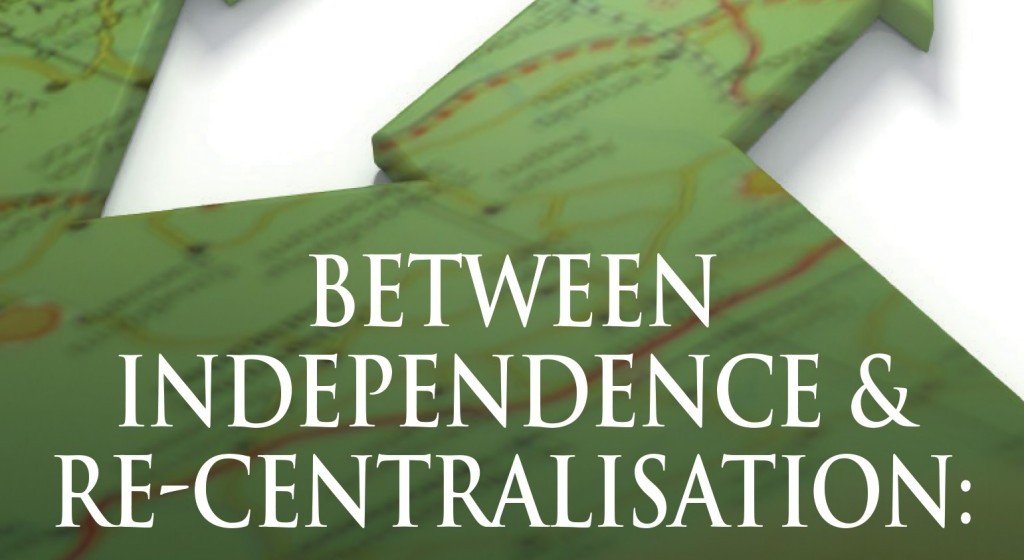 The Spanish state has been suffering from a deep crisis for several years, as Basque and Catalan claims for the ‘right to decide’ have clearly illustrated. Thus, it’s hardly surprising that the federalist option has been rediscovered as a way to solve the problems of the ‘State of Autonomies’. Is federalism a realistic solution?
The Spanish state has been suffering from a deep crisis for several years, as Basque and Catalan claims for the ‘right to decide’ have clearly illustrated. Thus, it’s hardly surprising that the federalist option has been rediscovered as a way to solve the problems of the ‘State of Autonomies’. Is federalism a realistic solution?
To answer this question, two aspects should be considered: 1) the potential of federalism as a solution to the specific problems linked to national pluralism; and 2) the viability of federal reform in Spain.
1. Federalism and national pluralism
Federal studies have been considerably revived over the last 20 years and have abandoned some of their former beliefs or convictions. Federalism is not a panacea for solving problems of national pluralism in democratic contexts. Nor is federalism is a project necessarily concerned with national diversity (see Seymour and Laforest 2001: 9-10). This renewal has been greatly motivated by the difficulties encountered in advanced democratic systems (Canada, Belgium, Spain, to give a few examples) to reconcile deep diversity with the specific demands of the democratic principle. That is what Carl Schmitt already referred to in 1928 (2003: 356) when he emphasized the necessity of (existential) cultural and political homogeneity to ensure the stability of federal states. Empirical evidence confirms the German jurist’s theory. The great majority of federations, including those which started with important cultural and political diversity, evolved towards a form of Unitarian federalism which, in its fundamental aspects, eventually adopted the shape of the dominant State, the Nation-State (one State, one people). Schmitt refers to this federal form as ‘the federal State without federal bases’ (2003: 368). In the most recent specialized literature calls this type of federalism ‘territorial federalism’, that is to say a way to organize the political power of a single people or nation from a legal and territorial point of view (otherwise known as a monistic theory of federalism; see Karmis and Norman 2005: 3-17).
Whether that kind of federalism works in states made up of different peoples or nations is a question that has naturally been examined by scholars The most refined analyses and the most accurate answers (Requejo 2009; Parent 2011; Gagnon 2011; Requejo and Caminal 2011; Burgess 2012) were provided by academics after studying national conflicts in federal democracies (Canada, Belgium) or almost federal ones (UK, Spain, Italy). The conclusion was clear: territorial federalism cannot satisfy the aspirations of peoples or nations that seek union without giving up their political freedom (what Olivier Beaud calls the ‘particularistic principle’ of federalism – 2007). The type of federal union that minority nations aspire to is called ‘multinational federalism’ (a pluralistic theory of federalism; Karmis and Norman 2005: 3-17).
What are the main features of pluralistic federalism? In fact, this is not about a new federalism but the reactivation and reformulation in current terms of the federal principles that can be found in the first federal processes of our political modernity (Cagiao y Conde and Gómez-Muller 2014). Among these principles, the cornerstone is a constitution as a compact between different peoples, the idea of federation as union rather than unity, or the basic principle according to which loyalty or federal solidarity, for example, should express itself abiding by agreed constitutional rules (especially in the distribution of competences). To sum up, and reversing Schmitt’s statement, in the pattern of multinational federalism, democracy should be adjusted to federalism rather than federalism to democracy (Burgess and Gagnon: 2010).
It can thus be asserted that, between the two patterns, only multinational federalism can represent an appropriate means to address the problems arising in democratic contexts characterized by national diversity, by offering minority nations an alternative that could be preferred to independence. As far as it is concerned, territorial federalism can certainly ease tensions and calm down temporary crises through concessions from the majority nation to the minority nations (oftentimes temporary), but the logic inherent to the system will sooner or later lead the minority nations (which cannot cease to be in a minority under territorial federalism) to ask for full national recognition, either by claiming multinational federalism or by seeking independence.
Having said that, both federalisms can obviously meet the aspirations of minority nations (territorial federalism can do it in the short term). However, the main obstacle those federal projects usually find on their way is not their good or bad acceptance by minority nations, but their rejection by the majority nation, which is the one that is able to carry out constitutional change in Spain.
2. A viable option for Spain?
As has been said, the possibility for either of the two models to bring solutions to the problem of national pluralism is one thing, their attractiveness to the dominant nation or nationalism is another one.
In fact, two different attitudes from Spanish nationalism should be distinguished in order to understand why a federal reform of the system in Spain appears to be hardly viable (territorial nationalism) or not viable at all (multinational federalism).
The option of multinational federalism finds, in my opinion, two impassable obstacles on its way. Its irreconcilability with Spanish nationalism (its majority parties: PP, PSOE, and maybe Podemos), on the one hand; and the special procedures for a total or substantial constitutional reform (Article 168 Spanish Constitution) on the other hand. Therefore, although the PSOE has stated its preference for a federal model of State, in no case has it gone so far as to contemplate the possibility of a multinational State based on a constitutional compact between its three dominant nations or nationalisms (Spanish, Basque and Catalan).[1] Even if it were the case, the advisable reform of Articles 2 and 3 would require special procedures for a total or substantial reform (Article 168), which first require a 2/3 majority in the Congress and the Senate. This would be followed by the immediate dissolution of the Cortes and the ratification of the reform by the new Chambers with the same 2/3 majority, and finally a popular referendum. It seems impossible for the project of multinational federalism to prosper under those conditions.
Fewer obstacles can be found on the way to constitutional reform when it comes to territorial federalism. First of all, sooner or later there could be a political majority in Spain capable of reforming Title VIII of the Constitution. Second, reform could be carried out under the procedure laid down in Article 167. Indeed, in the next general elections (late 2015 or early 2016), a majority ready to implement the federal reform of the Spanish Constitution might emerge. At least, it is a possibility that shouldn’t be ruled out. Of course, it seems difficult for any political party to get a majority large enough to conduct the reform alone. However, supposing the party led by President Mariano Rajoy is severely defeated, an agreement between different parties favorable to the federal reform (PSOE, Podemos, IU, etc.) might reach the 3/5 majority required in the Congress and the Senate (or an absolute majority in the Senate and a 2/3 majority in the Congress in case a 3/5 majority is not reached in both Chambers). But even in that case, it doesn’t mean the reform process would be successful in the end. The Constitution establishes that one tenth of either Chamber (35 deputies or 26 senators) is enough to ask for the ratification of the reform project by popular referendum (art. 167.3). Should the case arise, the PP might very well play that card, all the more so as a majority of Spaniards might reject a project that has been continuously presented as a first step towards national dissolution for several years.
To conclude, the multinational federal option seems to be quite unfeasible. As for the territorial federal option, which minority nations would be satisfied with until they can get full national recognition when the context gets more favorable, it seems to be hardly viable because of its outright rejection by Spanish center-right political parties (PP, UPyD).
References
Olivier Beaud (2007): Théorie de la Fédération, PUF, Paris
Michael Burgess, Alain-G. Gagnon (ed.) (2010): Federal Democracies, Routledge, London and New York
Michael Burgess (2012): In Search of the Federal Spirit. New Theoretical and Empirical Perspectives in Comparative Federalism, Oxford University Press
Jorge Cagiao y Conde, Alfredo Gómez-Muller (ed.) (2014): Le multiculturalisme et le reconfiguration de l’unité et de la diversité dans les démocraties contemporaines, Peter Lang, Bruxelles
Alain-G. Gagnon (2011): L’Age des incertitudes. Essais sur le fédéralisme et la diversité nationale, Presses de l’Université Laval
Dimitrios Karmis, Wayne Norman (ed.) (2005): Theories of Federalism. A Reader, Palgrave Macmillan, New York
Christophe Parent (2011): Le concept d’Etat federal multinational. Essai sur l’union des peoples, Peter Lang, Bruxelles
Ferran Requejo (2009): Fédéralisme multinational et pluralisme de valeurs. Le cas espagnol, Peter Lang, Bruxelles
Ferran Requejo, Miquel Caminal (2011): Political Liberalism and Plurinational Democracies, Routledge, London and New York
Michel Seymour, Guy Laforest (ed.) (2011): Le fédéralisme multinational. Un modèle viable ?, Peter Lang, Bruxelles.
[1] I’ve chosen to leave apart the Galician case, bearing in mind that in spite of Galicia’s undeniable national markers, the dominant nationalism there is not Galician but Spanish. That is what all regional and national electoral results have established over the last 30 years.








No Comment